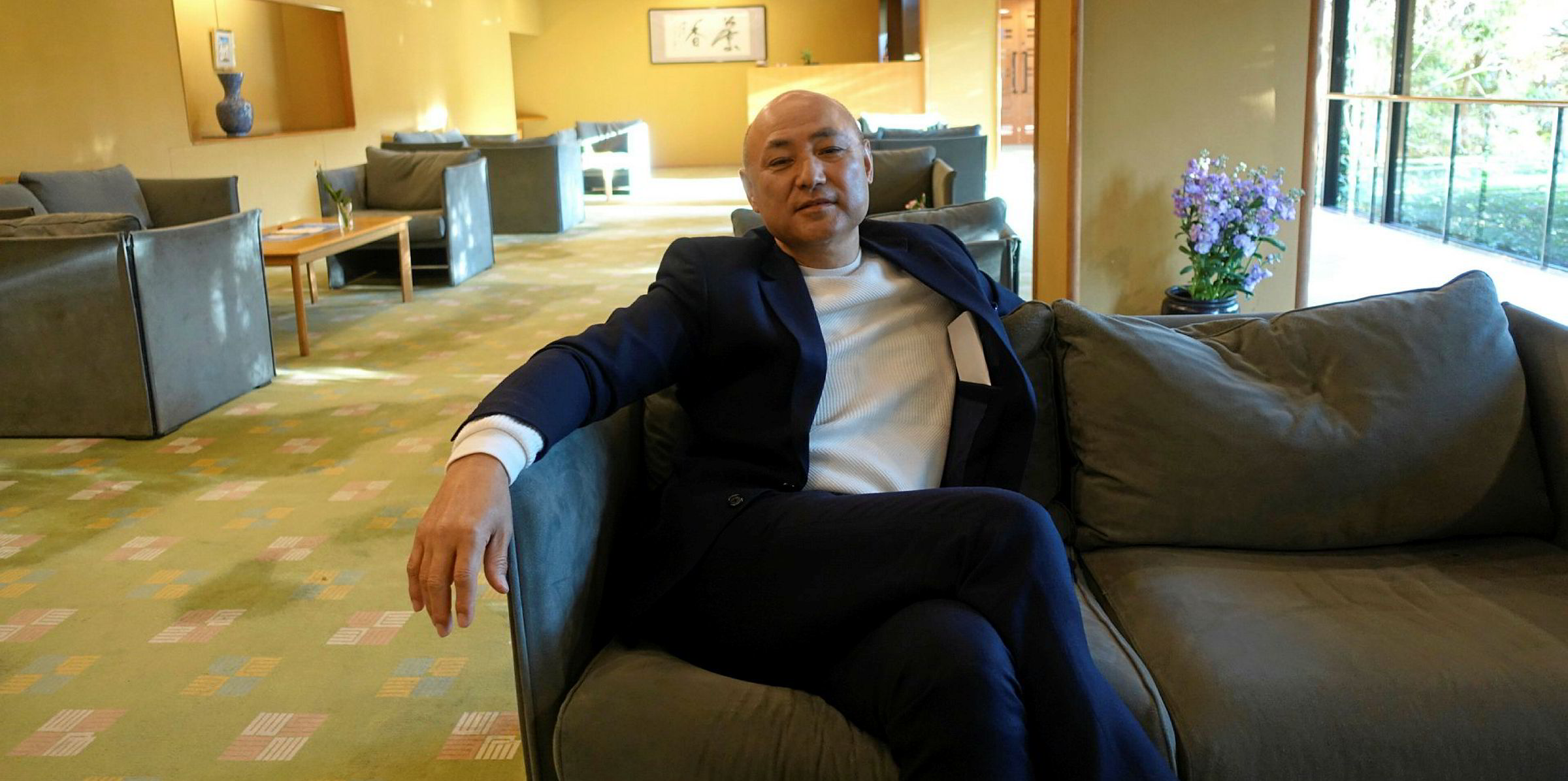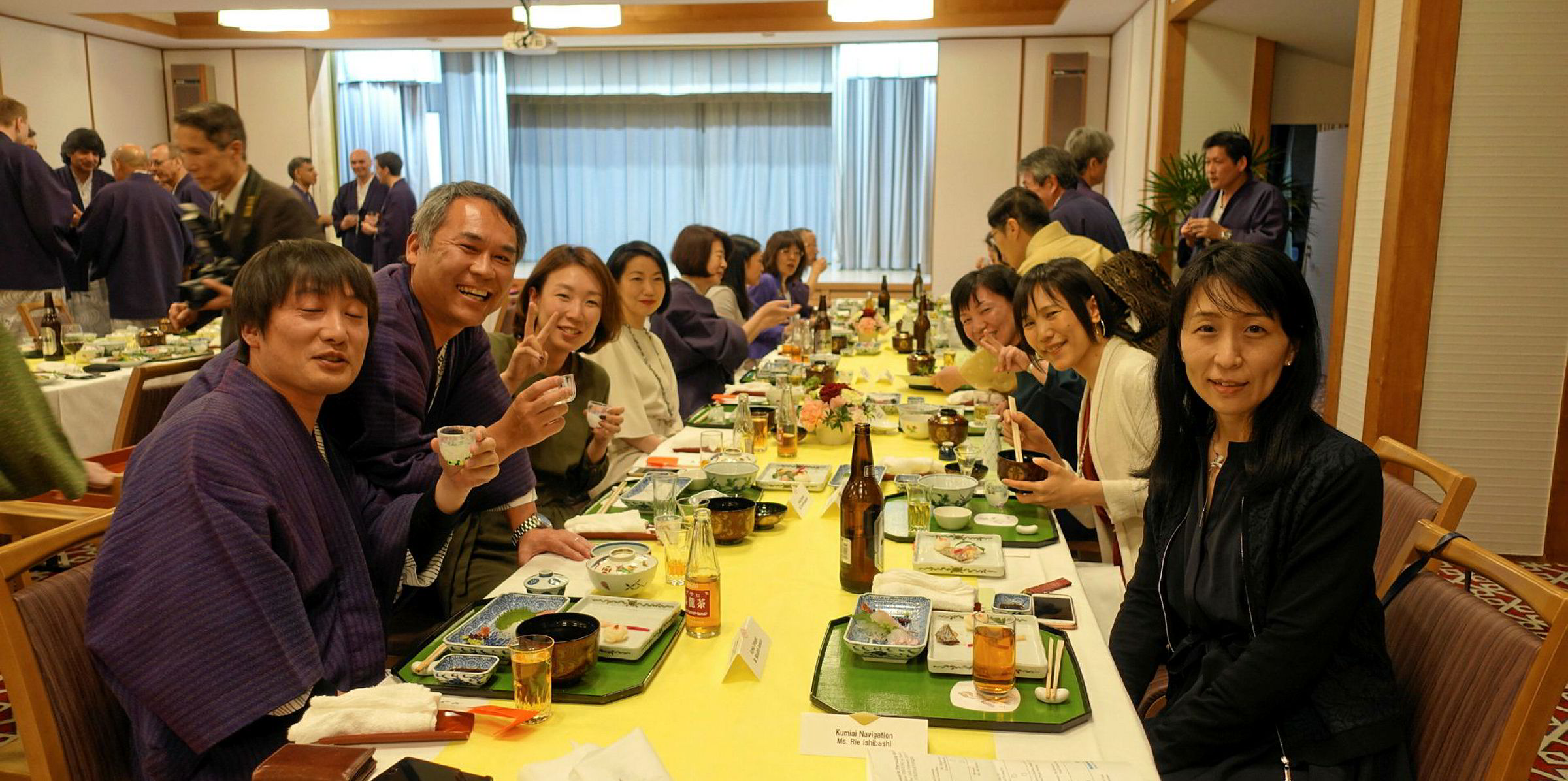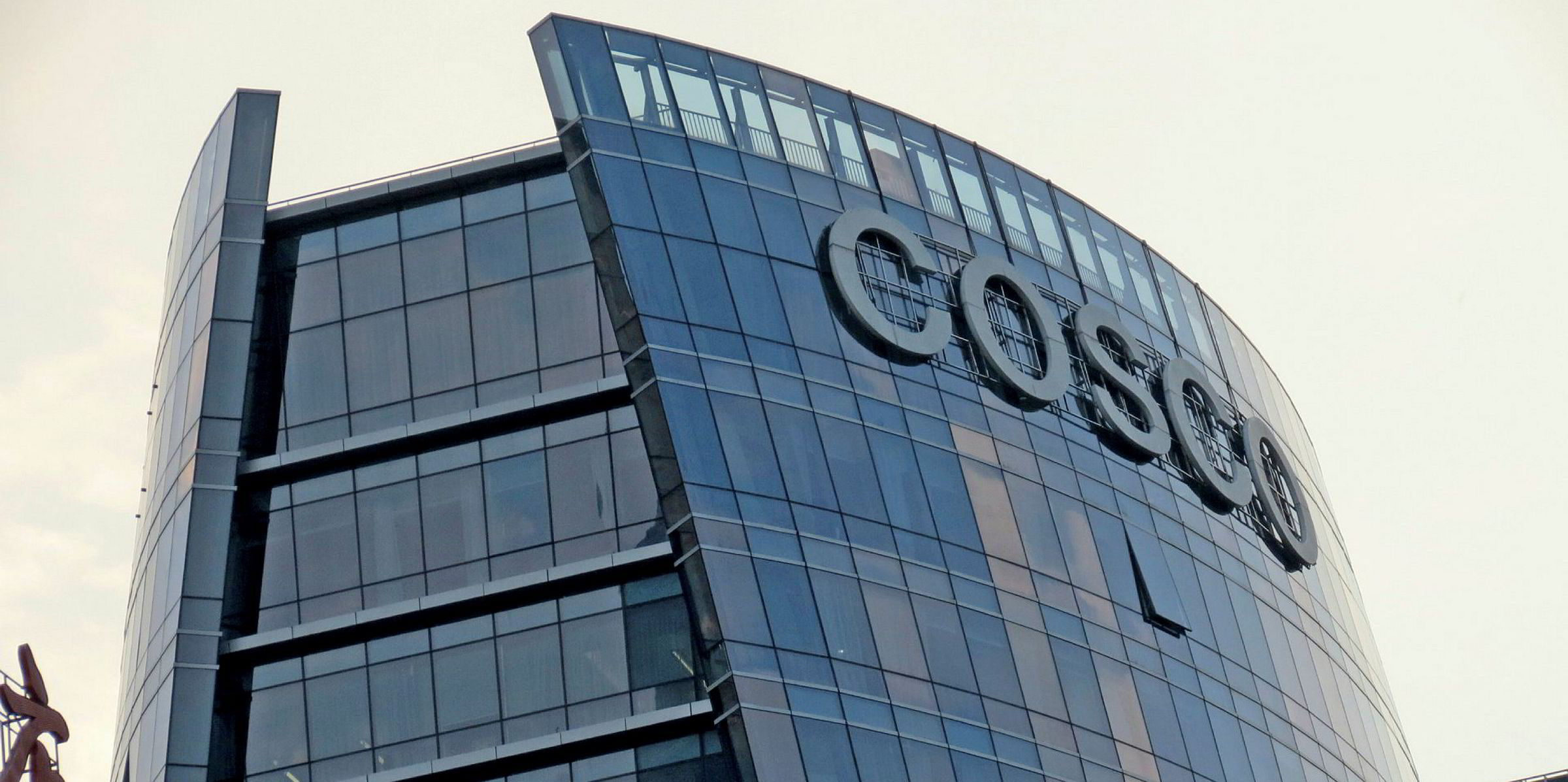Japan’s Kumiai Senpaku's fleet will increase to 19 ships on delivery of its latest and final newbuilding — an LPG carrier.
The company is preparing to sell some of its stable of vessels.
“This will be the last newbuilding to join KS [Kumiai Senpaku],” said company president Nobutaka Mukae, referring to the 38,000-cbm fully refrigerated gas carrier Hourai Maru. “We are planning to scale down our fleet.”
Mukae said the firm has no ambitions to go big and he wants to remain a conservative player.
Planning retirement
“I am already 63 years old and I need to prepare for the next generation to take over the company when I retire. I do not want to invest in new, expensive ships and incur huge debt and burden the next generation.”
Mukae told TradeWinds that he will be selling Kumiai Senpaku’s bulkers when their charters end.
The executive cited examples of dry bulk companies making major growth moves, such as Cosco Bulk Shipping's order of up to 16 newbuildings to move bauxite, as well as other companies replacing capesizes with newcastlemaxes.
“I am a believer of the classic supply-and-demand concept. There is an excess supply of conventional ships in the shipping market,” he said.
Low entry barriers
Mukae believes the low barriers of entry in dry bulk caused the surplus ships.
“The dry bulk business is an easy sector to enter as long as one has the money. We have seen newcomers and funds joining the segment. It does not require much expertise,” Mukae said.
“I prefer niche vessels, such as the LPGs and asphalt tankers. They are for specialised trade and require some expertise. One gets to learn more from sectors like this.”
Although Mukae is keen on specialised ships, he will not invest in new tonnage as he has a limited budget and is only going for “capital-safe” ships.
Kumiai Navigation, a subsidiary of Kumiai Senpaku, controls a fleet of 14 vessels and six newbuildings.





